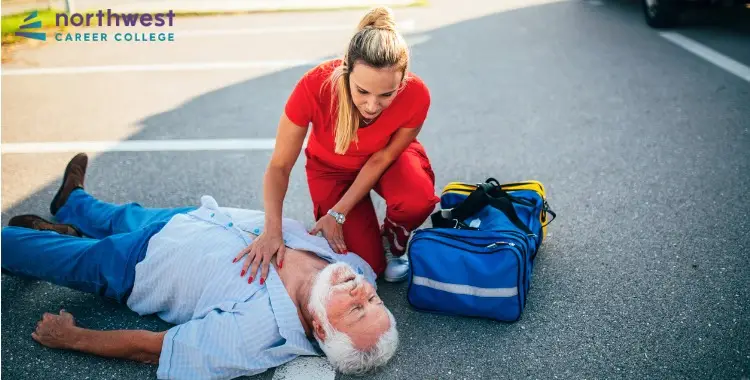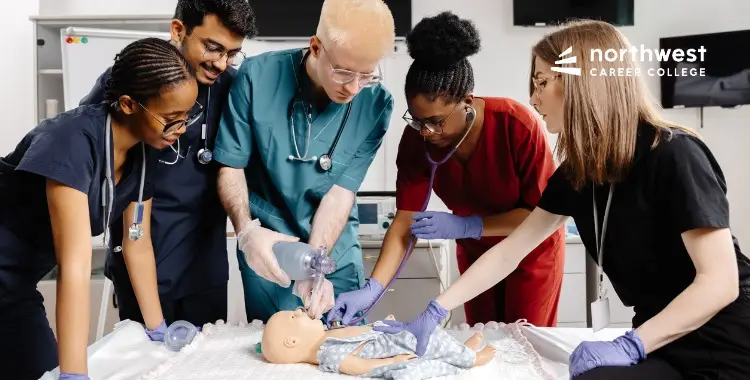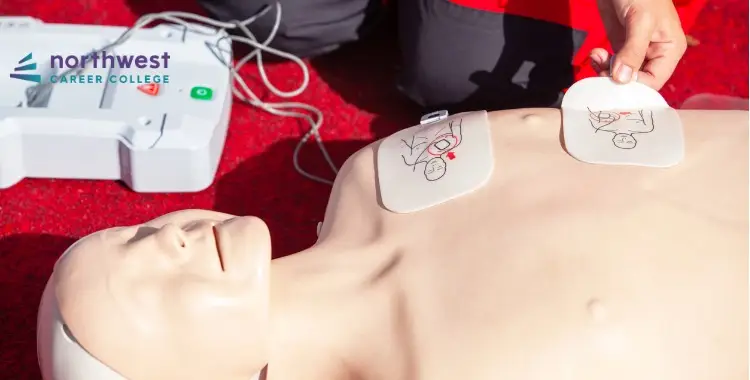Manual vs. AED CPR: Which is More Effective?
- CPR
- April 30, 2024
- 2.9k views
- 4 min read

The effectiveness of Manual CPR and Automated External Defibrillators (AED) in saving lives has sparked a debate. These two techniques can be used to revive individuals facing cardiac arrest, and there are questions regarding which one is more effective. This post will compare and contrast Manual CPR with AED CPR to determine which has higher potential and efficiency in saving lives.
Table of Contents
What is Manual CPR?
Cardiopulmonary resuscitation (CPR) is a life-saving technique used to restore normal breathing and circulation in a victim whose heart has stopped beating. The traditional method of CPR involves manually compressing the victim’s chest and delivering rescue breaths until advanced medical help arrives. The effectiveness of this method depends solely on the physical strength and ability of the first aider to provide continuous circulation and oxygenation of blood until professional help arrives.
Pros of Manual CPR:
- Universal Application: Trained Individuals can perform manual CPR in various settings since it is readily available.
- Immediate Intervention: It is clear that bystanders, with basic knowledge and skills, can perform manual CPR to reduce the critical intervening time between cardiac arrest onset and professional medical help arrival.
Cons of Manual CPR:
- Physical Fatigue: Prolonged manual compressions of the chest predispose fatigue at the expense of producing effective CPR.
- May Cause Injury: CPR may cause injuries to the patient if not performed correctly, and even if it is performed correctly, it will likely cause damage to the patient’s chest or ribs. The potential benefits of CPR greatly outweigh the risks of these injuries. However, it is still essential to receive proper training in AED CPR to avoid any potential complications or injuries.
- Limited Efficacy: Manual chest compressions alone do not provide enough blood flow to vital organs if attempted, thus reducing the possibility of successful resuscitation.
Automated External Defibrillators (AEDs)
For a long time, manual CPR has been the go-to method for managing cardiac arrest. However, AEDs are a more recent technology used to complement resuscitative efforts by bystanders or first responders. These portable devices deliver electrical shocks to restore a normal rhythm to the heart.
Pros of AED CPR
- Quick deployment: AEDs are done in a manner such that they can be deployed quickly by a layman to ensure early defibrillation in crisis cases.
- Shock Accuracy: The automated nature is much more accurate at reducing the chances of human decision-making errors when detecting shockable rhythms.
- Improved Survival Rates: Research has shown that early defibrillation using AEDs significantly improves the survival rates of sudden cardiac arrest victims.
Cons of AED CPR:
- Not Suitable for All Cardiac Arrest Cases: AED CPR is not recommended when the patient has a pulse or in some cases of pediatric cardiac arrest. Therefore, knowing when and how to use AED CPR is essential to avoid complications.
- Not Effective in some Cases: If the patient has an underlying medical condition, AED CPR may not work. It is essential to follow the instructions provided with the AED and receive proper training to ensure you perform CPR correctly.
Manual CPR and AEDs
Ultimately, comparing AED usage with Manual CPR may not be appropriate. Instead, the key takeaway should be that Manual CPR should complement AED usage (and vice versa), as both are essential strategies for managing cardiac arrest before the arrival of EMTs able to provide advanced life support services. A comprehensive Chain of Survival program may strengthen the survival and neurological recovery of persons in cardiac crisis.
Conclusion
In conclusion, the combination of manual CPR and AED CPR can increase survival rates from cardiac arrest. Communities need to be prepared by incorporating both approaches into their life-saving strategies.
If you’re interested in learning more about CPR programs and how to incorporate them into your community, please don’t hesitate to explore the options available on our campus. We’re here to help you increase your preparedness and save lives.



